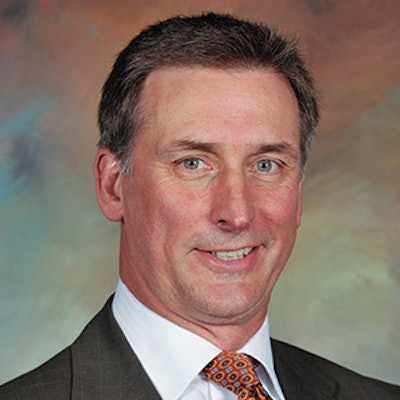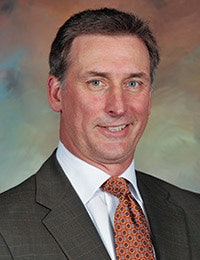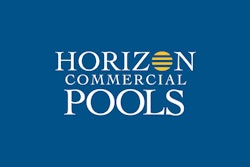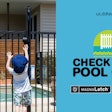
 Richard Garbee, APSP board chairman.
Richard Garbee, APSP board chairman.
When Richard Garbee took over as chairman of the board at The Association of Pool & Spa Professionals this past November, he was no Johnny-come-lately — not to the organization and its board of directors, and certainly not to the pool and spa industry. Garbee had been a board member for more than two years before being elected to his new role, and, as he puts it, he's "a lifetime pool and spa guy."
After Garbee, now 54, earned a Bachelor of Arts in Psychology from the University of the South, he graduated from the Harvard Business School's Program for Management Development. He has been an active member of the pool and spa industry since 1983 and began his career with Hayward Pool Products, where he held a variety of positions. Currently, he is vice president of sales and marketing for GLI Pool Products.
Garbee served on APSP's Manufacturers Council and chaired the rebirth of the APSP Leadership Summit during the 2008 and 2010 seasons. He became a board member in 2013 and was elected chairman in November 2015. He resides in Pittsburgh with his wife and four children — and, yes, the Garbee family owns a backyard pool.
We recently spoke with Garbee about his new role as board chairman, what he hopes to accomplish during his tenure and his assessment of where the industry needs to go.
If a member of the pool and spa industry came up to you today and asked why they should join APSP, what would you tell them?
I would start by telling them about the association's new drive to promote the industry. APSP members will be seeing a very strong promotional push when we launch our Escape marketing campaign in 2016. It will be especially valuable for our builder and dealer members.
Escape includes an online microsite specifically branded for the campaign, tools to help APSP members do their own marketing and an advertising program — primarily Internet-based — to tout the pleasurable lifestyle the industry can provide.
What else would you tell them?
Of course, I'd talk about our many educational offerings and training materials. Also, we do research and provide a great deal of data about the pool and spa industry and market. That research, both on the consumer side and the industry side, is invaluable — especially for manufacturers — because it can help them estimate the merits of a particular product decision, value an acquisition, or justify the valuation of a company interested in selling.
One of the biggest impediments to getting new-pool construction back up and running has been that homeowners have had such a hard time obtaining financing. Recently, APSP partnered with Prosper, the country's first peer-to-peer lending marketplace, to provide financing solutions to the clients of APSP members. The financing is for pool, spa, hot tub and home improvement projects. That is, I think, a big step forward.
Finally, I would say that perhaps the most compelling reason to belong to APSP is that it affords terrific networking opportunities. When I think about all the amazing, high-quality people I've met just in the last few years, I'm very grateful. If nothing else — and there are many other benefits — the networking opportunities that our activities and programs provide make membership worthwhile.
How would you compare the pool and spa industry with competing industries — say, the boating and RV industries?
There's no getting around the fact that the pool and spa industry as a whole has lagged behind the marine and RV industries when it comes to promoting itself. We need to change that. I'm confident the Escape campaign will be a big part of the solution.
Why has the industry lagged behind?
We've tended to be a little parochial as an industry. Over the past ten years, the RV and marine folks have put a great deal of time, effort and resources into promoting the experience they offer consumers. We haven't done that to the same extent.
One thing that pretty much everyone in our industry can agree on is the need for growth. No industry is entitled to ongoing growth; an industry has to earn it.
Where will that growth come from?
It's essential that we zero in on the changing generation among our potential consumers. We're starting to move out of the baby boomer phase and into the Generation X and Generation Y phase. These people are a different demographic than the folks who bought pools in the past. I believe The WAVE Network, APSP's organization for young pool and spa professionals, will play an instrumental role in this regard.
However, I don't want to give the impression that we should ignore the baby boomers. Pools and spas offer a number of great health and fitness benefits to an aging population, and that market will remain an important potential opportunity for our industry.
Overall, we have to shake up the status quo in the industry and promote the lifestyle pools and hot tubs bring to consumers' lives. If we don't do that, the industry runs the risk of becoming irrelevant. Positive consumer testimonials and experiences of pool and hot tub ownership in 2016 are essential to building a better industry. The pools and hot tubs of today are safer, require less maintenance and are able to fulfill the visions of a backyard vacation better than ever. So the challenge is to figure out how to shake up the industry to make it more vital and vibrant and top of mind as a purchase with our prospective customers.
A decade ago, the pool and spa industry was experiencing boom times. Will we ever see that kind of explosive growth again?
In 2005 and 2006, the industry reached an apex in new-pool residential construction. That was due in large part to the bubble that existed in the housing market. When the bubble burst, it hurt the pool and spa industry enormously. The situation we were in back then will probably never return.
It's very important that we are realistic about how big our industry can and will be. Currently, there are approximately 60,000 new inground residential pools being built annually in the U.S. That's down from a high of 180,000 during the boom years.
In my opinion, we ought to be shooting for 100,000 new pools a year. I think that's a realistic goal. And we should be aiming for it on an accelerated basis, not with a three, four or five percent annual growth rate.
The drought in California has posed a real challenge to the pool and spa industry there. That challenge may spread to other areas of the country. In your view, how should the industry respond?
The most important thing we can do is make sure the actual facts of water usage for pools and spas get out to the public. In California, the California Pool & Spa Association, in conjunction with Norwood Associates, a government relations firm, has been at the forefront of doing just that.
The CPSA has been very successful in helping municipalities in California understand the benefits of pool ownership, as well as the fact that pools and spas make up only a very small fraction of water usage in the state. I'm happy to say that APSP has collaborated with them on the work they've been doing since July in this important effort to stay front and center in the local discussions on water conservation. John and his team in California have had great success in communicating this messaging to state authorities, which has allowed our industry to continue to grow and prosper during this drought. We see efforts like this as very important to our associations' contribution to the industry.
What will be your objectives as board chairman?
APSP has set a series of strategic objectives that I think are excellent; they won't change under my tenure as chairman. But I hope we'll redouble our efforts toward making them a reality.
I'm pleased to report that we've been working hard on getting the association's financial house in order. Doing that was absolutely essential to attaining our objectives, and we've accomplished it!
Now that we have a firm financial foundation, we can turn our attention toward a growth strategy for the industry. We want to tie our efforts in that regard to our members so we create a clear value proposition for them. And we want to protect our members from burdensome, unreasonable regulations though our government relations program.
What will be your top priority as chairman of the board?
My number one priority will be to increase the collaboration among various segments and organizations in the pool and spa industry. I think that's extremely important for creating a positive, strong message that our industry can and will grow.
In addition to the aforementioned work with CPSA, we have also just announced our support of the National Swimming Pool Foundation's Step Into Swim campaign, which has a goal to create one million new swimmers in ten years. That's an admirable and doable goal that will only benefit the aquatics industry as a whole. We are also aligned with the International Hot Tub Association and the Canada Pool and Spa Association, and have enjoyed a longstanding relationship with the Northeast Spa & Pool Association, which we fully intend to strengthen in the coming years.
I'd like to see more of these kinds of connections within the industry. Creating and galvanizing these relationships can only serve to spur the growth we all want. They'll help builders, service people and retailers survive and thrive in the current consumer environment.
If we have this conversation again a year from now, what do you hope we'll be talking about?
All of the above. In addition, I certainly hope we'll be discussing the success of the Escape campaign, how APSP and its members are working to make a significant investment in the program and how Escape has had a strong, positive impact on the market and most importantly, our members.
Finally, the most important message I want to leave is that we have an obligation to take the industry from where it is today and leave it healthier for the next generation of pool and hot tub professionals. I truly believe we're on the way to accomplishing that.




































